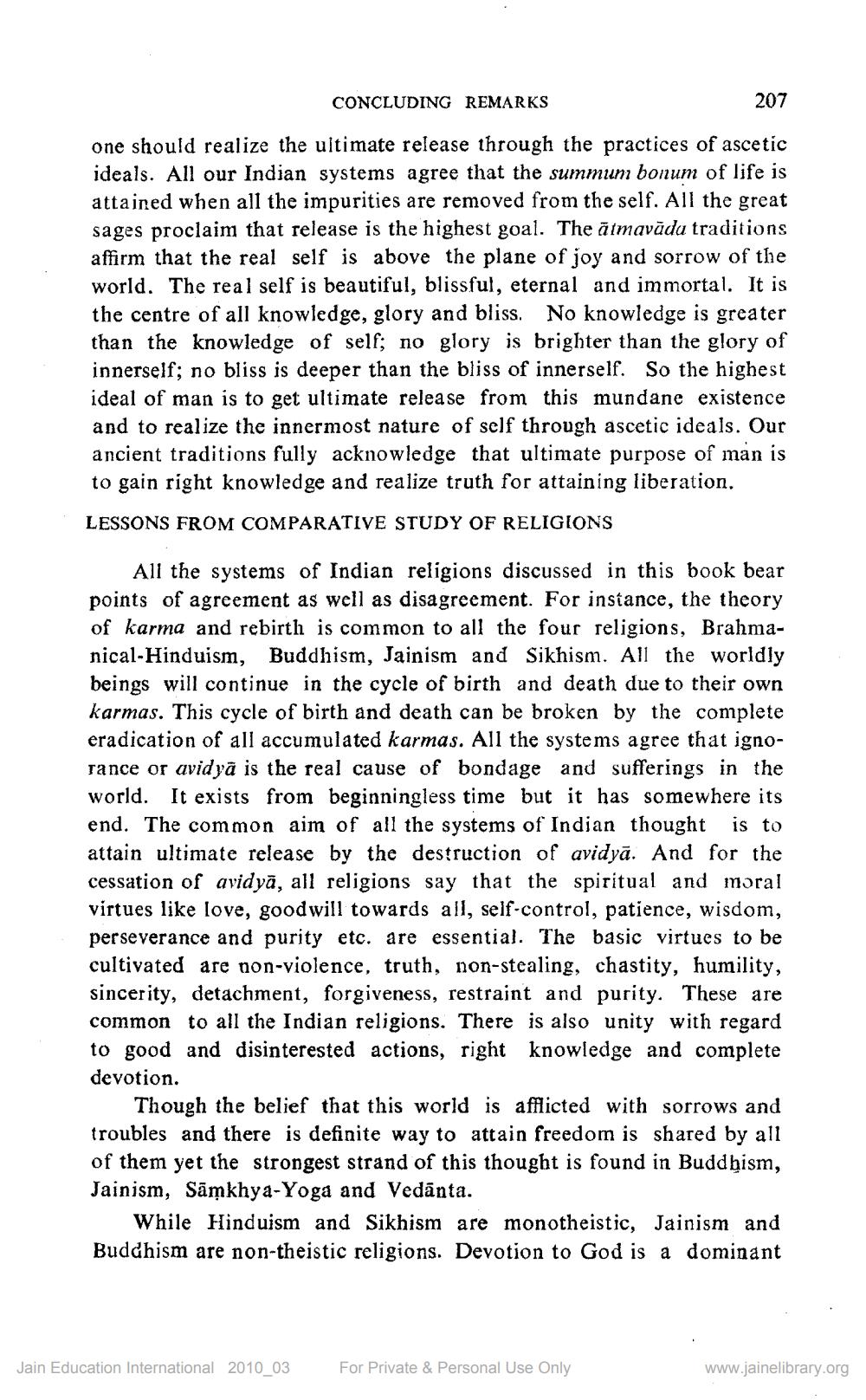________________
CONCLUDING REMARKS
207
one should realize the ultimate release through the practices of ascetic ideals. All our Indian systems agree that the summum bonum of life is attained when all the impurities are removed from the self. All the great sages proclaim that release is the highest goal. The ātmavāda traditions affirm that the real self is above the plane of joy and sorrow of the world. The real self is beautiful, blissful, eternal and immortal. It is the centre of all knowledge, glory and bliss. No knowledge is greater than the knowledge of self; no glory is brighter than the glory of innerself; no bliss is deeper than the bliss of innerself. So the highest ideal of man is to get ultimate release from this mundane existence and to realize the innermost nature of self through ascetic ideals. Our ancient traditions fully acknowledge that ultimate purpose of man is to gain right knowledge and realize truth for attaining liberation.
LESSONS FROM COMPARATIVE STUDY OF RELIGIONS
All the systems of Indian religions discussed in this book bear points of agreement as well as disagreement. For instance, the theory of karma and rebirth is common to all the four religions, Brahmanical-Hinduism, Buddhism, Jainism and Sikhism. All the worldly beings will continue in the cycle of birth and death due to their own karmas. This cycle of birth and death can be broken by the complete eradication of all accumulated karmas. All the systems agree that ignorance or avidyā is the real cause of bondage and sufferings in the world. It exists from beginningless time but it has somewhere its end. The common aim of all the systems of Indian thought is to attain ultimate release by the destruction of avidyā. And for the cessation of avidyā, all religions say that the spiritual and moral virtues like love, goodwill towards all, self-control, patience, wisdom, perseverance and purity etc. are essential. The basic virtues to be cultivated are non-violence, truth, non-stealing, chastity, humility, sincerity, detachment, forgiveness, restraint and purity. These are common to all the Indian religions. There is also unity with regard to good and disinterested actions, right knowledge and complete devotion.
Though the belief that this world is afflicted with sorrows and troubles and there is definite way to attain freedom is shared by all of them yet the strongest strand of this thought is found in Buddhism, Jainism, Sāmkhya-Yoga and Vedānta.
While Hinduism and Sikhism are monotheistic, Jainism and Buddhism are non-theistic religions. Devotion to God is a dominant
Jain Education International 2010_03
For Private & Personal Use Only
www.jainelibrary.org




